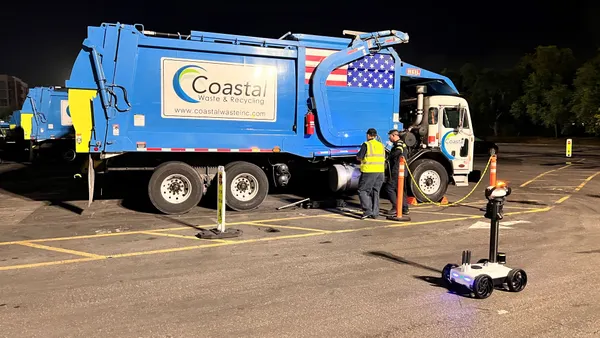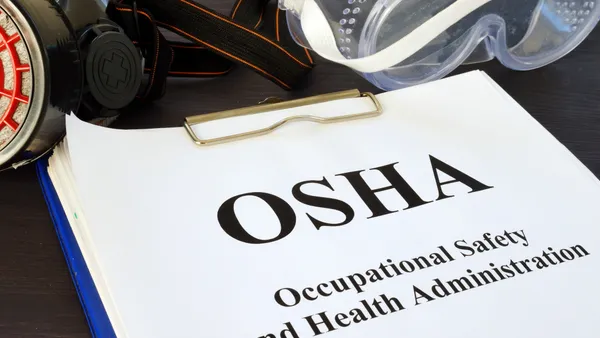Dive Brief:
- The Department of Labor's Occupational Safety and Health Administration (OSHA) released a preliminary list of the 10 most commonly cited violations of fiscal year (FY) 2017 across all industries, as reported by Safety.BLR.
- In order, the list includes: fall protection in construction; hazard communication; scaffolding; respiratory protection; lockout/tagout; ladders in construction; powered industrial trucks; machine guarding; fall protection training requirements; and electrical wiring methods.
- While not all of these violations are relevant to waste and recycling, many — including hazard communication, lockout/tagout and powered industrial trucks — are crucial for industry professionals to be aware of.
Dive Insight:
The 2017 list is very similar to the list from last year, however the message remains the same: employees must take workplace safety and health very seriously. In a blog post last year, Thomas Galassi, OSHA's director of enforcement programs, wrote that this list actually rarely changes — change will only come from within. "If all employers simply corrected the top 10 hazards, we are confident the number of deaths, amputations and hospitalizations would drastically decline," he wrote.
Many waste and recycling industry organizations have taken action to mitigate the top 10 hazards. ISRI recently launched a series of free training courses to promote hazard recognition in recycling; NWRA launches occasional Safety Stand Down events for its members; and SWANA prioritizes safety in many ways, including making it a topic track at industry conferences. OSHA itself has even tried to boost participation through programs such as its "Safe and Sound Campaign," though it is evident that more needs to be done to ensure compliance.
Better complying with OSHA standards will not only keep employees and managers out of hot water, but will also save lives. The Bureau of Labor Statistics' (BLS) fatality summary — which indicates refuse collection as the fifth most dangerous occupation in the country — has loomed like a dark cloud over the industry for years. In order to send employees home safely to their families every night, both managers and workers must step up and commit to safety protocol.











